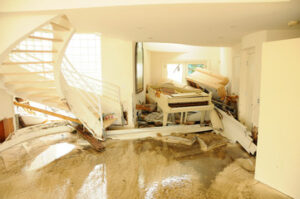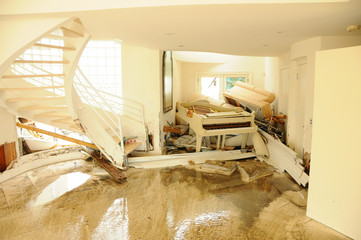Regardless of how small or large the disaster is, there is a need to have a disaster restoration plan in place. This will ensure that your business can recover quickly from the event so that you can avoid the costly and damaging effects that result from fire or water damage. You will also need to consider what the costs are involved so that you can budget properly for restoration.

Whether your home has been damaged by a natural disaster or a plumbing leak, you’ll need to act quickly to get it back to normal. While you’re at it, you’ll want to take steps to protect your health and your home’s structural integrity.
Water damage can occur in several different ways, including leaking roofs, overflowing toilets, broken pipes, and even washing machine leaks. Each of these scenarios can cause extensive damage to your home and can lead to serious health problems.
The first step is to shut off the water and get an emergency contractor out to assess the damage. Once you’ve done that, you can start restoring your home. Depending on the type of damage, you may need to have your home completely reconstructed.
After you’ve shut off the water, the next step is to remove any standing water. This is important to prevent mold growth and other health problems. It’s also a good idea to move any items that aren’t damaged by water.
You should also remove any building materials that are not salvageable. This can help to dry out the property faster. If there are walls or ceilings that are damaged by water, you may need to replace them.
Using industry-standard equipment, it has a wide array of services to choose from. They’ve also been certified by multiple certifying organizations.
Water damage restoration is a very time-intensive process. The damage can be extensive, and you may need to replace drywall or other materials that were damaged.
If you don’t act quickly, you can end up with more extensive damage to your home. Getting professional help can also help to prevent mold from growing.
Having a fire can be devastating to a home or business. It can cause damage to the structure of a building and leave behind an unpleasant odor. The restoration process includes cleaning, repairing, and restoring the property to its pre-loss condition.
The first step in a fire restoration process is assessing the damage and determining the extent of clean-up. The contractor must also evaluate the contents of the property. This includes what can be salvaged and what should be thrown out.
The next step is to deodorize the area around the damaged building. This will remove the lingering smoke odors. The odors are a big issue in fire restoration.
If the fire had been contained, the contractor might be able to salvage some of the items in the building. The items will be cleaned and packed out to an offsite facility.
The restoration process can take weeks or months, depending on the scope of the job. The contractors may also need to secure the property. This includes tarping the roof, boarding up openings in the building, and fencing around the property. The purpose of securing the property is to prevent cross-contamination.
The process of restoring the property to its pre-loss state may involve demolition, hazardous materials removal, and reconstruction. It is important to choose a company that will work with your insurance provider to make the process go smoothly. Some companies only do repair work, while others provide reconstruction services.
The restoration process can involve a lot of hand work and manual labor. Using specialized equipment, the company will remove the smoke and soot stains from the structure. The company will also make minor repairs and clean the building.
During disaster restoration, it is essential to take care of moisture problems. This is important for several reasons. Firstly, it is necessary to remove excess moisture before it can cause mold to grow. Second, it is necessary to control the moisture before it can recontaminate the structure. Third, it is necessary to prevent the growth of mold in the first place.
To prevent mold from forming, you should remove mold as soon as it appears. You should also take steps to prevent water from damaging your home in the first place.
For example, you should clean up debris that has fallen in your home from a storm. You should also install a waterproofing system to prevent moisture from causing further damage.
